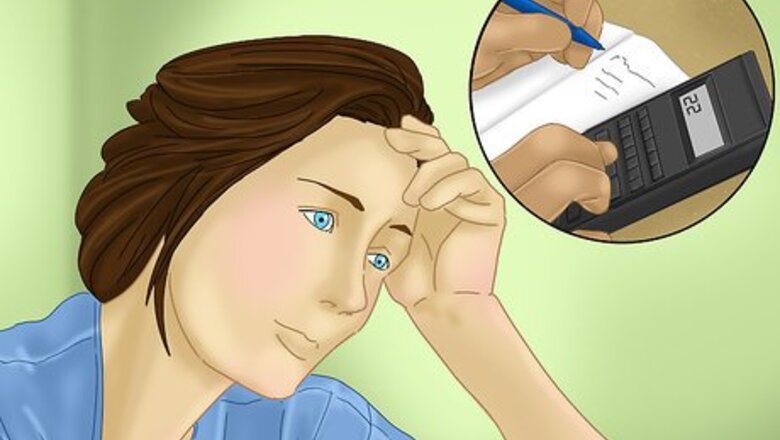
views
X
Trustworthy Source
Johns Hopkins Medicine
Official resource database of the world-leading Johns Hopkins Hospital
Go to source
The process of quitting can be unpleasant, but once you’ve broken the habit, you’ll likely be glad you did.
Going Cold Turkey

Choose a good time. You probably don’t want to quit right before finals or when you’ve got a big deadline coming up. Find a time when you can have a full week without extra responsibilities. Mark your calendar so that you stay accountable to yourself. If you are always busy and can’t find a low-stress week, you may need to wean yourself off, instead of quitting cold turkey. Vacation can be a great time to quit coffee. You’ll be away from your routines and have time to rest.
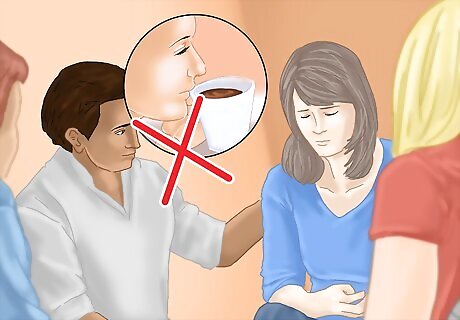
Tell your family that you’re quitting. Let them know you may be a bit sluggish for a few days. Some people become a little absent-minded or grouchy when they first quit drinking coffee. If they know you’re in the process of detoxing, they won’t take it personally. If other people in your household drink coffee, ask if they can avoid making or drinking it around you. Your family can help you stay on track. Ask for their support. Tell them that if your resolve weakens, they should encourage you to stay away from coffee.
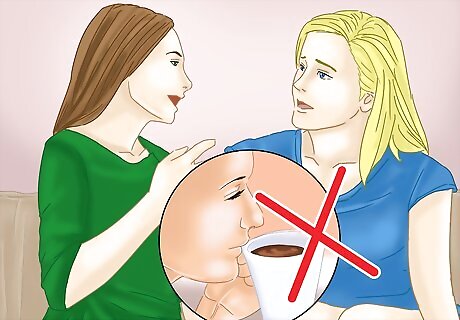
Let everyone at work know. You don’t want your coworkers to think you’ve suddenly lost your work ethic, but you may be moving slowly for a few days. Tell your coworkers (and even your boss) that you’re in the process of quitting coffee. They’ll likely understand and be sympathetic. If your workplace offers free coffee throughout the day (for example, if you work in a restaurant or a busy office) let your coworkers know that you’ll be avoiding it. Bring something with you to replace coffee you would otherwise be drinking. Seltzer water or lemon water is great to sip on throughout the day and keeps you hydrated.

Keep pain relievers handy. Caffeine withdrawal often causes headaches for anywhere from one to three days. Take pain relievers as needed to get through the headaches. Make sure to drink plenty of water with them as well. Always check the labels of pain relievers. Some contain caffeine, which won’t help you in your plan to quit coffee!
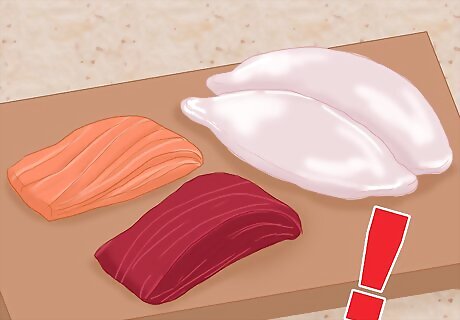
Eat a high protein diet. Protein provides a gentle energy boost throughout the day. Meals high in carbohydrates can make you sleepy. When carbs lower your energy level, you’ll be tempted to reach for the coffee as a pick-me-up. Avoid the temptation by avoiding meals high in carbohydrates. Meats, dairy and legumes are excellent sources of protein. Carbohydrate-heavy foods include processed grains like white flour and white rice. Sugary foods will cause the same energy crash.
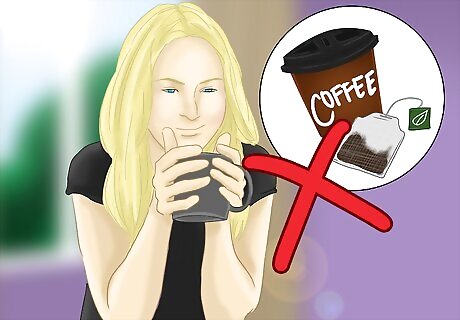
Avoid triggers. You likely have specific times you are used to having coffee. It may be with breakfast or as a ritual before getting some late-night work done. You may associate certain situations with coffee. Perhaps you always have coffee when you spend time with a certain friend, or when you attend a morning meeting. It may not be possible to avoid all triggers. If you know you’ll encounter a trigger, plan ahead. Bring some tea or lemon water to your morning meeting. Take your friend to a cafe where you can get something other than coffee.

Nap when you need to. Of course, it’s not always possible to nap in the middle of the day. However, you may feel the urge to nap in the first few days of quitting. If you can squeeze in a 20-minute nap, go for it! Try quitting right before the weekend. That way, you’ll have two days that you can nap before you have to return to a full workday.
Weaning off Slowly

Track your usual coffee intake. Take a couple of days and drink the amount of coffee you typically drink. Take note of how much you consume, including number of cups and the sizes of each cup. Once you have a solid baseline, prepare yourself to start the process of quitting, when you’ll drink less. Drink extra water as you begin to quit. Being hydrated helps ease caffeine withdrawal.
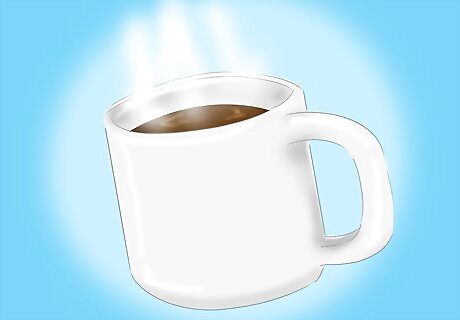
Drink half that amount the next day. If you normally drink one cup of coffee per day, drink half a cup. If you normally drink four cups, drink two. If you want to drink the same amount of coffee but less caffeine, you can replace half of the coffee with decaf coffee. If you’re not sure how much coffee you normally drink, simply pour yourself half a cup every time that you would normally pour yourself a full cup.
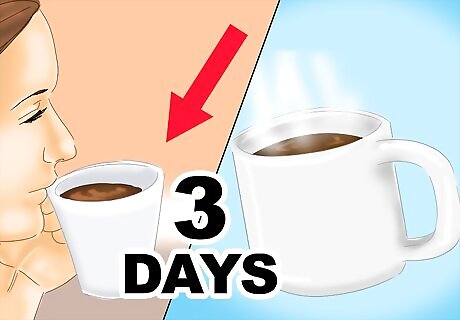
Continue drinking that amount for three more days. This will get your body used to a lower amount of caffeine. Drink extra water during this step to help your body detox. After a few days at this lower level of caffeine, you should not feel any withdrawal symptoms. If you do feel any withdrawal symptoms after a few days, stay at this level of caffeine intake until the symptoms (drowsiness, headache, shakiness) go away.

Halve your intake of coffee again. If you’d gotten down to half a cup per day, now only drink a quarter of a cup. If you went from four cups to two, now go from two to one. You may now be drinking very little coffee. If you still want to have something hot to sip on, fill your mug with decaffeinated coffee to add volume. Decaf contains caffeine, but the amount (only a few milligrams per cup) is generally considered negligible. You may want to stay at this level of coffee intake for a few days as well.

Switch to only decaf. This time, you won’t drink any regular coffee at all. Many people enjoy drinking decaf, since it satisfies the psychological need for coffee. You can choose to replace all of your daily coffees with decaf, or to refrain from coffee altogether. Choose good decaf that you like. Dedicated coffee drinkers often complain that decaf doesn’t taste as good as regular. If you choose a high quality decaf, you likely won’t taste the difference!
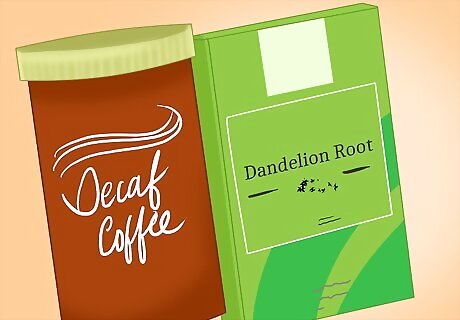
Blend the decaf with an herbal substitute. If you’re trying to quit coffee altogether, you’ll want to replace the decaf as well. Start by drinking decaf mixed with a coffee substitute. Dandelion root and chicory are common substitutes for coffee. Many brands offer “coffee style” instant beverages made from these plants. You can drink them just as you would coffee—adding cream and sugar if you like. Eventually, replace all of the decaf with your coffee substitute. You may decide to go without the substitute completely if you don’t care for it very much.
Finding a Substitute

Decide what you enjoy about coffee. People decide to quit coffee for different reasons. You may love the taste, but want to ditch the caffeine. Or, you may want something healthier that still has stimulant properties. Look for an alternative that suits your needs. For a similar taste without the caffeine, you can try chicory, dandelion root, or decaf coffee. If you like your coffee sweet and creamy, you may opt for hot chocolate or chai lattes. Some coffee shops offer decaffeinated chai. These are high-fat, high-sugar choices. If you’re looking for something that offers a stimulant effect, you can try green tea, black tea, or yerba mate. Herbal teas such as chamomile, mint, and rooibos have zero caffeine.
Look for a replacement with antioxidants. Coffee is a main source of antioxidants in many diets, and looking to stop coffee consumption means that you will need to find a new source of antioxidants for daily health. Decreasing your daily coffee intake may mean increasing the amount of tea you drink and/or the amount of fruits and vegetables you eat. Teas such as white and green tea have antioxidants that can replace those in coffee, but they also have caffeine. If you are trying to eliminate caffeine along with coffee, you may want to opt for whole fruits and veggies, or whole natural juices.

Swap one of your coffees for a substitute. Rather than decreasing the amount you drink incrementally, try drinking the same amount, but swapping some cups out for a coffee substitute such as tea or water. If you drink more than one cup of coffee per day, only substitute for one of them. If you normally drink one cup of coffee per day, drink a little less of it daily and then have some of your preferred coffee replacement. Make sure you have your substitute handy at all times. Keep some tea bags at your desk, or in the car. If you don’t have your substitute handy, you’re likely to opt for a coffee when it’s convenient. Choose a substitute that you genuinely like. If you can’t stand the taste of green tea, you’re not likely to stick with it.
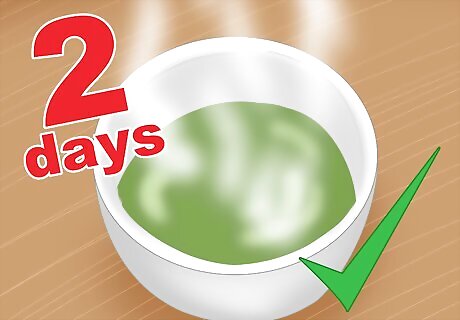
Repeat this for two to three days. Get used to drinking one cup less coffee per day. At the same time, you’re getting used to the substitute of your choice. This will help turn your new beverage choice into a habit. If you develop any caffeine withdrawal symptoms, such as headaches, take a caffeine-free pain reliever as needed.

Replace all of your coffees with the substitute. Once you’re ready, make the switch. By now, you should not be having withdrawal symptoms. You may find that you drink less of your substitute drink than you did of coffee. That is perfectly normal. You can always switch substitutes if you need to. You may eventually want to quit caffeine altogether, or do without all of the sugar in hot chocolate. Once you’ve quit coffee, quitting another beverage will likely not seem as hard.

















Comments
0 comment